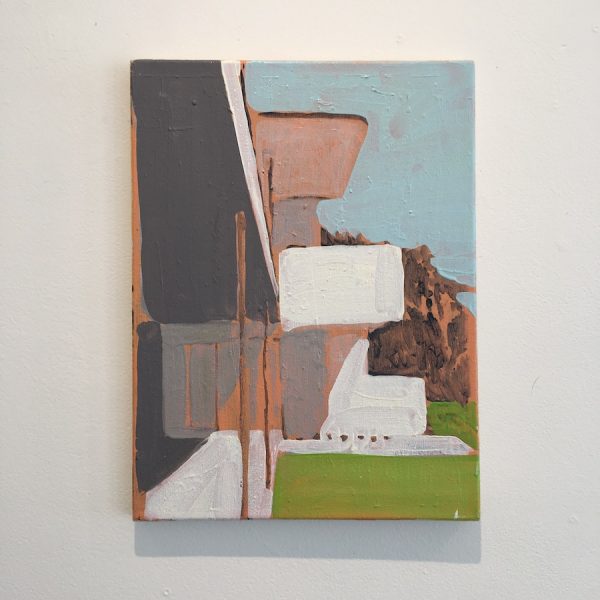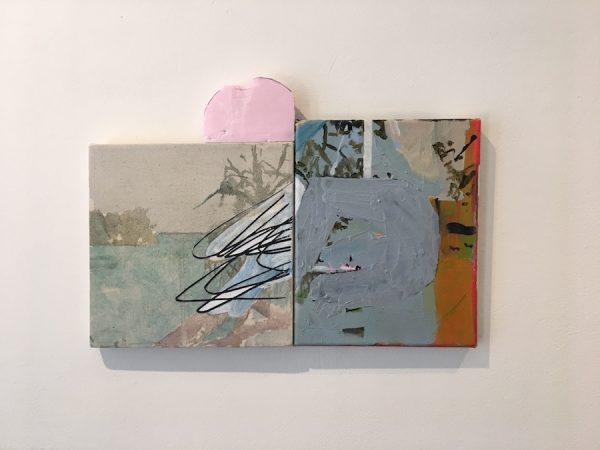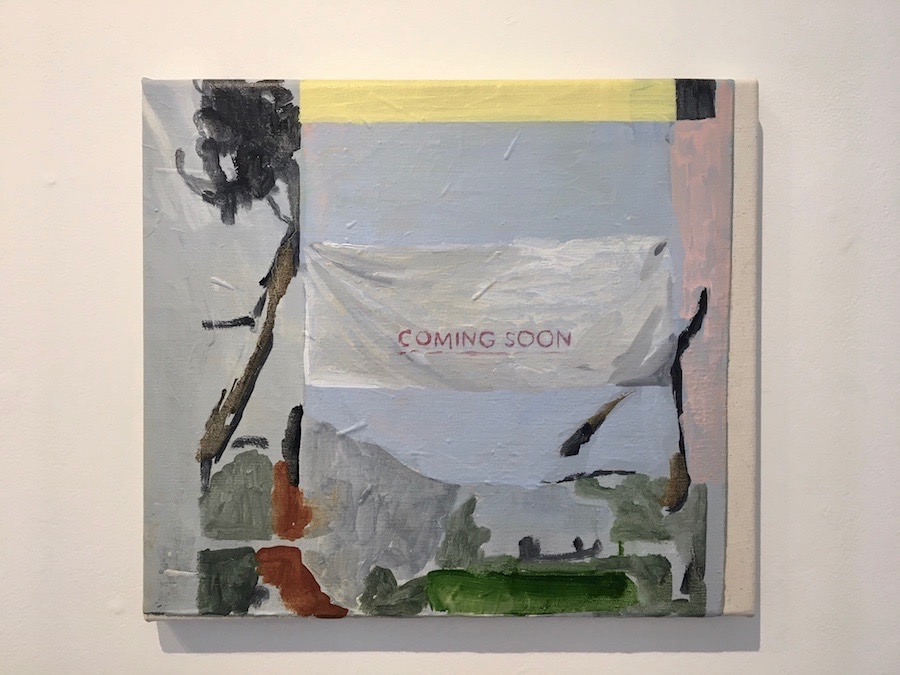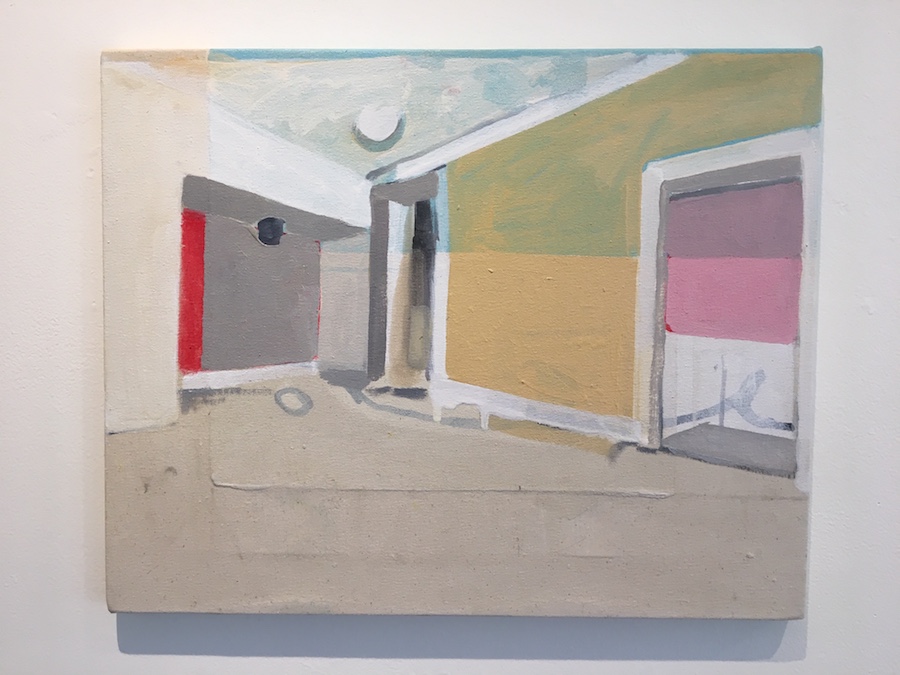
Painting by Maggie Hills
The recent show of Maggie Hills’ paintings at Bill’s Junk in Houston made me think a lot about how young artists conceptualize their work today. Hills, a mid-career artist, writes this of her work:
“Things thrown away and things thrown my way (leaflets, free newspapers, religious tracts); pictures ripped from magazines, catalogues, and photo-sharing forums; telephone doodles saved or stolen; graffiti; postcards; personal and family photographs…magpie-like I collect images and objects that catch my eye … I see these cobbled together structures as reflecting the fragile, fractured and assembled nature of the images they support and ultimately the complicated yet tenuous (and often surprising) experience of being alive.”
This is dressed-up language for “I stick things together that I like because I like them.” While this statement, once deconstructed, my not sound particularly conceptually rigorous, the actual paintings suggest otherwise. They are tight, smart, and at their best, creepy as hell: Hills’ paintings harbor within them a whole lot more than a reflection of a cobbled-together world.

Maggie Hills
And it makes me think about how we ask artists — particularly young ones entrenched in MFA programs — to constantly, via statements, wrap a nice, pretty bow around the articulation of their own work. Of course, there is practicality around this: some artists probably spend nearly as much time writing the myriad proposals asked of them by open calls and grant opportunities as they do making the actual work. And all this forced articulation makes me wonder to what degree young artists couch their work in academic language, to their own and the works’ detriment. It raises the question: If an artist (especially a very young one) can clearly communicate the content of their work linguistically, how conceptually rigorous could it possibly be? There should be a certain degree of murkiness from which an artist thinks and makes. They should be struggling to make sense of what they’re doing and why. Otherwise it is probably too simplistic.
(Glasstire’s Christina Rees gets into this subject more fully in her 2017 essay Should Artists Have to Talk About Their Work?)
Thus, the murkiness in Hills’ statement is fair and understandable, especially to those of us who’ve been around the block a few times. The inception of her paintings is a kind of postmodernist assemblage, but the finished paintings are actually pared-down and meticulously curated bodies of evidence completely and compellingly divorced from context.

Maggie Hills, Scribble Landscape, 2017
To be fair, there are a handful of works in the show that adopt the assemblage-esque quality that Hills evokes in her statement; they bear interesting marks of age and wear. We see, for instance, warped- and pressed-upon foam core in Untitled (2017), or a carefully scripted doodle that she Xacto’ed out and collaged onto Scribble Landscape (2017). These are the works where Hills overplays her hand. She loses sight of the fact that her curation of the detritus and fleeting moments that pass through her life — her power of synthesis — is more important than how she pieces them together.

Maggie Hills, Coming Soon, 2019
Hills is at her best when approaches her moments more as a forensic analyst than an assembler. We see this particularly with the two strongest works in the exhibition, Coming Soon (2019) and Empty Room (2018). With Coming Soon, she opts out of a more sculptural assemblage and instead goes for a loosely ‘collaged’ painting that reads as a gentle and cohesive landscape. But there’s something eerie about the “COMING SOON” banner strung across trees — this landscape may be gentle, but it is not innocuous. Like the gorgeous blue sky on the morning of 9/11, just before the event, this scene feels like it wants to whisper something dreadful in our ears, but can’t.

Maggie Hills, Empty Room, 2018
Empty Room has that same feel, functioning more as a looming evidentiary body rather than a recollection or compilation of ephemera. It more or less looks like a wide angle shot of a room in house — like something she screen-grabbed off HAR.com, but again, her gentle painterly treatment and subtle tonal gradations lend it a worrisome quality. It makes us wonder: What happened in that corner?
‘Maggie Hills: Used Paintings’ was on view at Bill’s Junk in Houston from September 6-21, 2019.



2 comments
This is really great. Only a few painters live in the realm of “this has to be a painting” … it’s great to see the undead medium holding its own. The lurking quality of these works!
Just read this review of this show I loved. As poetic as the works. Beautiful fancies and turns of phrase.